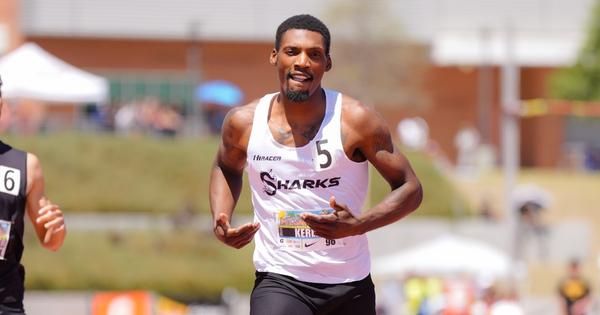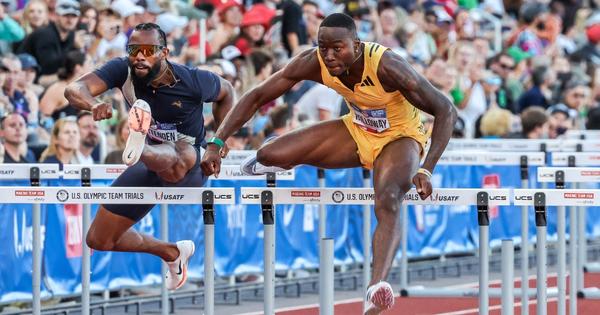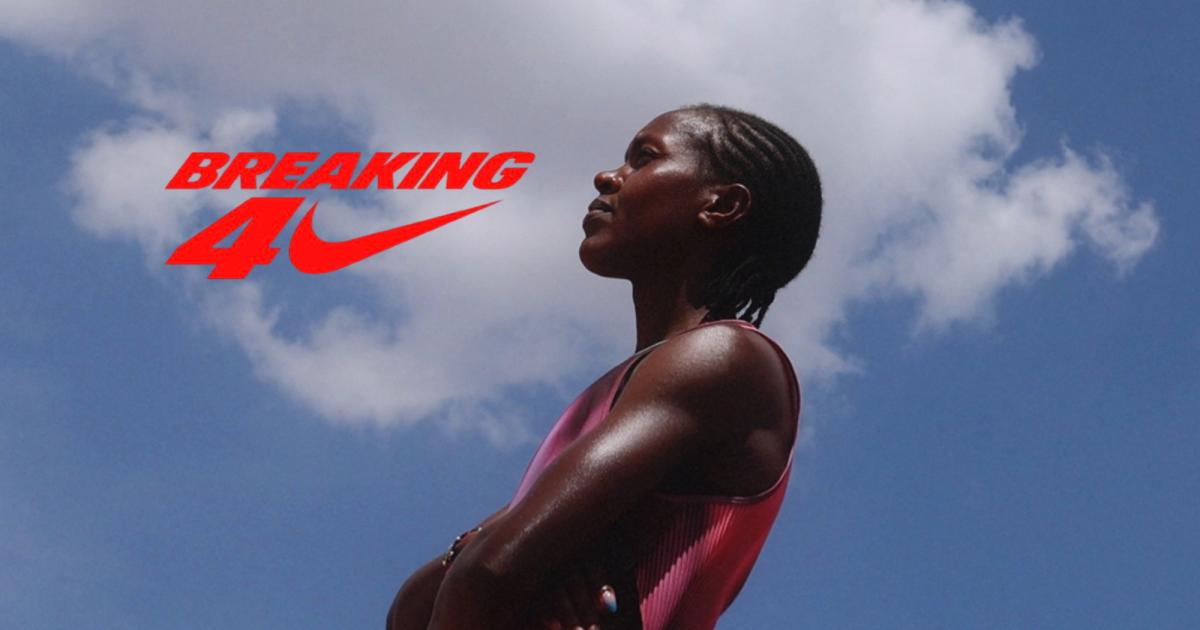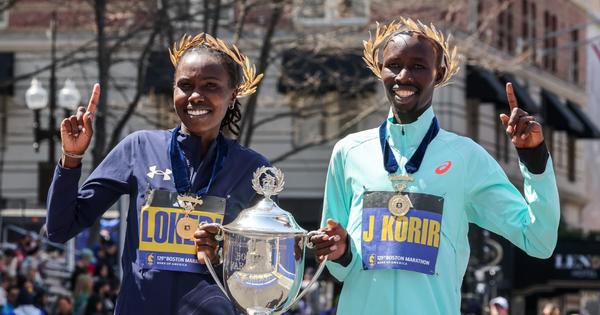By Paul Snyder
April 23, 2025
While we just rattled off 1,300+ words about all the exciting plotlines we’ll be keeping tabs on throughout this weekend’s Diamond League season premiere, the fact remains that it’s still April. And not every professional track and field athlete out there is keen to throttle the engine in their primary event with a global championship set for September.
Sure, if you’re, say, a 100m specialist, there’s probably some value in lining up early and often in your literal and proverbial lane. You can iron out the kinks, get comfortable with your start, and measure your progress as your sharpness comes around over the course of a long season. But track is just as much a mental game as a physical one, and crossing the line only to be greeted by a higher-than-hoped-for number displayed across the unforgiving clock? Well, that can strike quite the blow to your confidence—something you can’t afford to lack in this business.
But there’s a rather elegant solution employed by many of the world’s more established athletes in the early going of the season: entering a race longer, shorter, or otherwise separate from your signature event. You take the heat off (generally), in terms of expectations. You get to work on—or test— your strength in the most nebulous sense of the phrase. And if it goes really well, you get to hint that maybe you’ll pursue that new event more seriously. No matter what, there’s a positive to be spun out of it, as you’ll see from the following examples.
In the case of Fred Kerley, an NCAA champion over 400m, a return to the full lap after two-plus years of exclusively racing 200m and down went about as well as could be expected for an athlete with his unique pedigree. Kerley won the elite section at the Mt. SAC Relays in a very respectable 44.73. Fast enough to stake a claim to a 4 x 400m team spot at Worlds? Probably not. But quick enough to remind everyone that he could be on that squad if he shifted his focus back to the 400m full-time. Absolutely. With one Grand Slam Track double behind him and three more on the horizon, there’s plenty to like about Kerley’s decision to sprinkle in some over-distance racing. He’s going to get sharp with all those 100m-200m doubles, not to mention training. This was likely a good hard effort designed to harden the legs in preparation for that, plus rounds at USAs and Worlds.
Under similar 400m circumstances on the opposite coast, Erriyon Knighton and Noah Lyles experienced drastically different outcomes. Two of the fastest men on the planet over 200m finished near the back of their respective heats at a the Tom Jones Memorial in Florida (45.87 for Lyles, 46.26 for Knighton), and reminded us not to take for granted that the jump up to 400m is always an easy one, even for insanely accomplished sprinters. Knighton keeps a low profile, so little attention was given to this performance. Lyles, on the other hand… having an off-day at an off-distance could be a different beast for him. That’s because Lyles has made very public his desire to carry the baton for Team USA in the 4 x 400m. That’s looking less likely now, but no sane fan is worried about Lyles’s outlook over 100m or 200m after one middling 400m showing.
In the women’s race, Dina Asher-Smith continued her step up in distance and Anna Cockrell knocked the hurdles off the track, with Asher-Smith besting Cockrell 52.30 to 52.44. For someone like Asher-Smith, sticking with the 400m early is probably a double benefit: less potential for injury than the more explosive events, a serious concern for the injury-prone Brit, and good preparation for a busy championship schedule that could easily include two individual events and two relays. For Cockrell, it’s all about trying to separately hone every element of her specialty race to bring her steps closer to the unstoppable Sydney McLaughlin-Levrone.
Athing Mu-Nikolayev isn’t a sprinter, despite the 400m NCAA title she won in 2021. She’s an 800m specialist. Among the best ever. She just happens to be talented enough to step down and clean up in the 400m, too. (In fact, her coach, Bobby Kersee, might actually view Mu-Nikolayev as more of an 800m/1500m runner, if his insistence on her racing the metric mile at USAs in 2023 is any indication.) But regardless of her definition, it’s nevertheless strange that she “raced” 3000m of a 5000m at Mt. SAC in a hair over 9:40, we want to discuss what we can take away from that showing. The problem is—or maybe if you’re Mu-Nikolayev, the benefit—we didn’t learn much. This should’ve been an easy effort for her, that happened to take place largely in lane two of a race. The rationale behind this session was allegedly to give Mu-Nikolayev practice running on tired legs in a crowded race setting. Since her difficulty racing in a pack is really the only knock against Mu-Nikolayev as an athlete, we’ll say it’s nice to know it’s something she’s working on, and hopefully we’ll see more of her this outdoor season doing what we’re more accustomed to: staying on her feet over 800m and beating the field to the line by several meters.
But for every point comes a counterpoint, and for some, April is simply about sending a message. For Julien Alfred and her wind-legal 21.88 200m at Tom Jones, the message is that she’s a serious threat for the double gold she narrowly missed in Paris. For Trey Cunningham, it’s about showing Grant Holloway he can’t get too comfy on top, with Cunningham besting Holloway 13.09 to 13.18 in the 110m hurdles. And for 400m hurdler Chris Robinson, his 44.15 for a flat lap of the oval put himself closer to the relay pool than Lyles. That’s also particularly impressive given Robinson’s 45.54 at Grand Slam a few short weeks ago was also a personal best.
And last but certainly not least, April marked the return of someone we weren’t necessarily expecting to see so early on the circuit. Shelly-Ann Fraser-Pryce enjoyed a fine season opener at Kingston National Stadium’s Velocity Fest #17, running 10.94 with a +3.1m/s tailwind, making it just outside of a wind-legal performance. (Side note: it’s funny to watch this video of Usain Bolt and remember that both Bolt and SAFP are 38 years old.) SAFP is not known for racing just for the heck of it, and given her injury-shortened 2024 season, showing up in what seems like fighting shape in April felt like Fraser-Pryce was recreating a Monty Python classic, reminding us she’s not dead yet.
Ultimately, this strange interlude in the pro track and field schedule is all about making your year work for you. If you’re fit, head to China or Kingston and pick up a paycheck. If you’ve got weaknesses, now is the time to turn them into strengths. And if you came out of hibernation with a head full of steam, it’s time to let the world know. But don’t let these few critical weekends go to waste.

Paul Snyder
Paul Snyder is the 2009 UIL District 26-5A boys 1600m runner-up. You can follow him on Bluesky @snuder.bsky.social.




